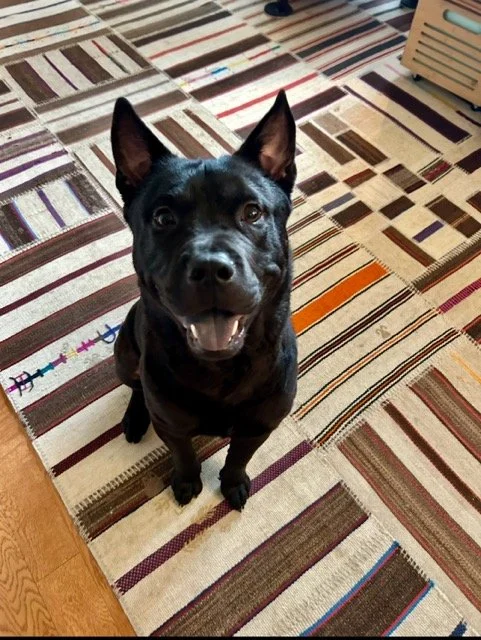Meet Bill Murray
He’s alert, energetic, and emotionally complex—because healing from trauma takes time.
-
When Bill joined us, it wasn’t a fairytale reunion—it was work. Blue arrived first from rescue, overlooked and bullied by his littermates; he had months to settle in. Bill came months later. Bill brought a different energy. He paced, barked, and startled. He wanted to engage but didn’t know how. Blue developed transference almost immediately, showing signs of what behaviorists identified as littermate syndrome. Both Blue and Bill Murray have separate development plans.
-
We tried everything: training, structure, calm routines, and positive reinforcement. But the real turning point came when we decided to treat his anxiety as something more than a training issue—it was a wellness issue.
With support from behavioral vets, Bill began medication to help his mind rest enough to eat more slowly, learn, focus, and build trust. That, paired with structured play and independence training, is the change we wanted to see.
However, Bill needs consistency, behavioral, and obedience training in an understandable environment.
-
Bill needs a place where he can enjoy the world more on his terms and is looking for people who can honor his need for space and activity.
His success will require more than training. It will require listening and learning. He’s why we built the Helping Paws checklist—to ask better questions and support dogs like him.
His DNA results are still pending, but signs indicate a strong 50/50 mix of American Bully and Chow Chow.
Understanding this helps us and his forever home support not only Bill’s personality but also his physiology and instincts.
-
Reach out, contact us directly if you would like more information on how to foster Bill Murray or follow his story on Facebook @bikeshelpingpaws https://www.facebook.com/bikeshelpingpaws and Instagram @bikeshelpingpaws (https://www.instagram.com/bikeshelpingpaws/).

